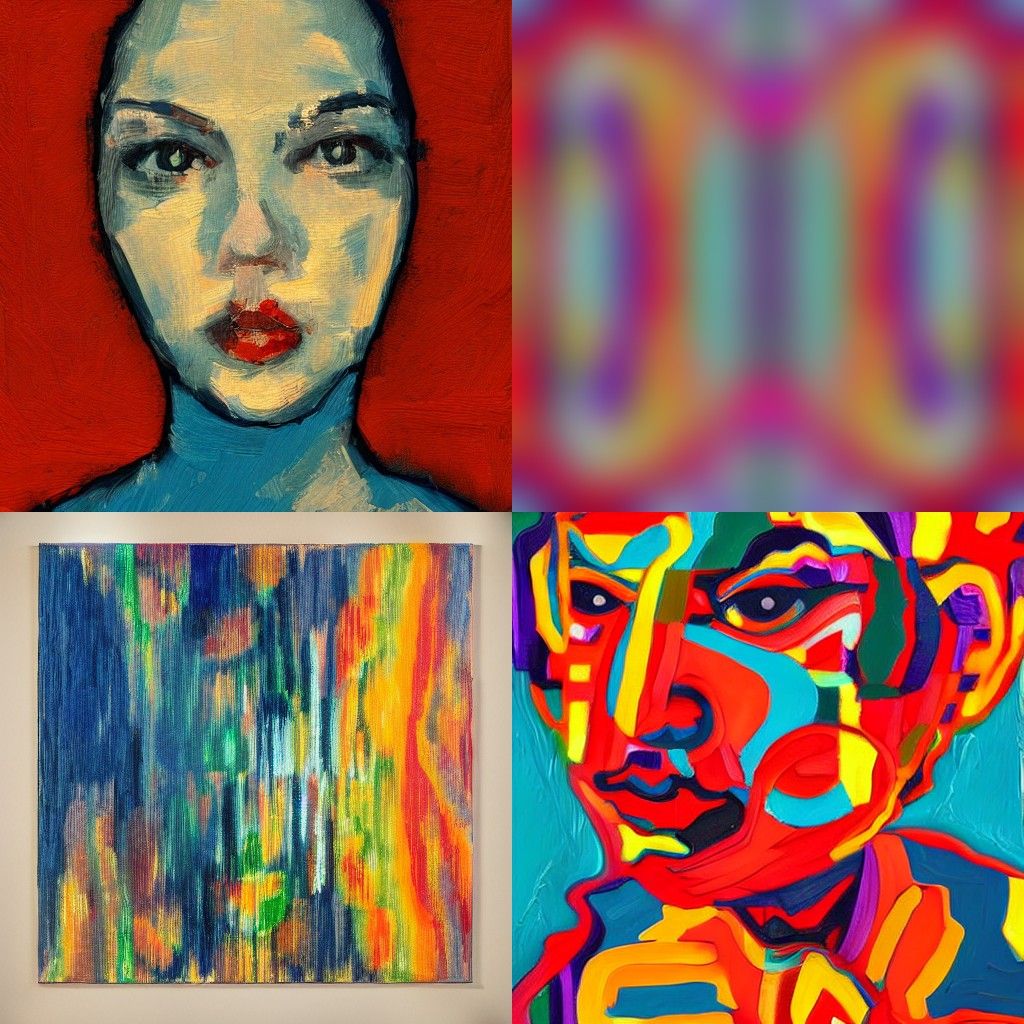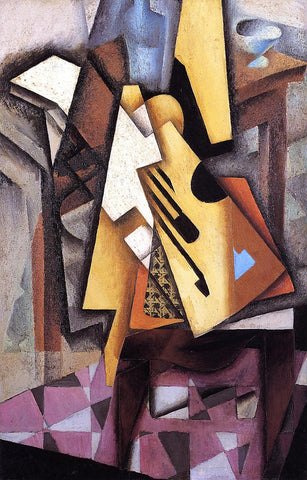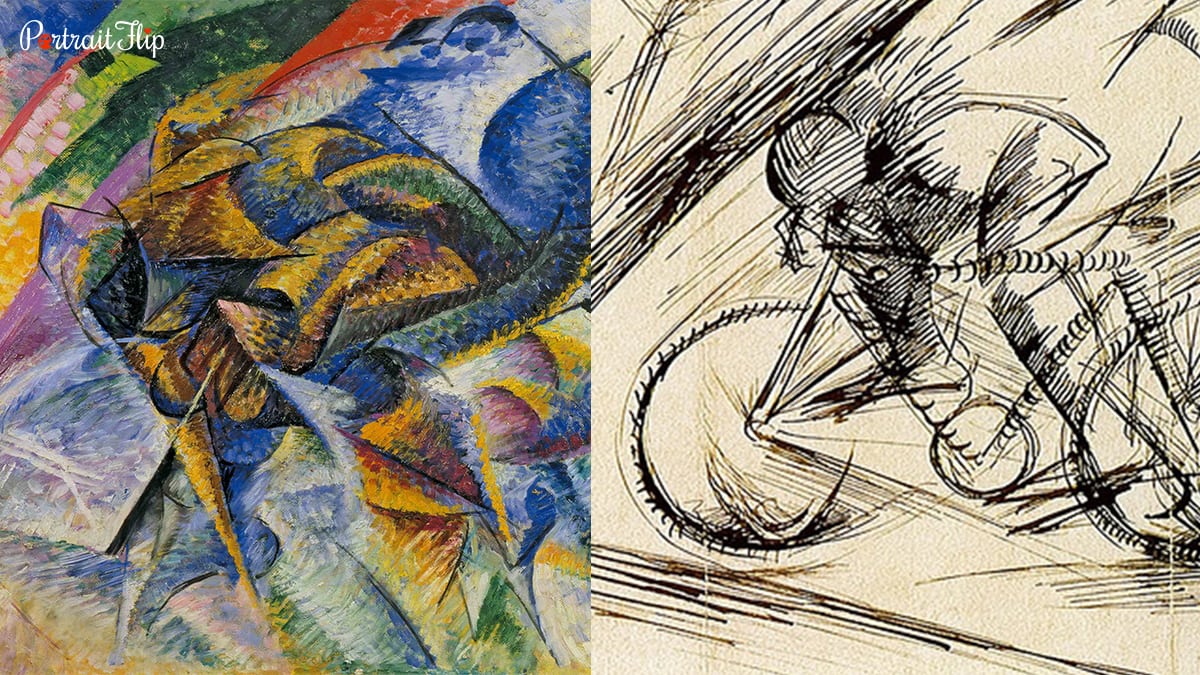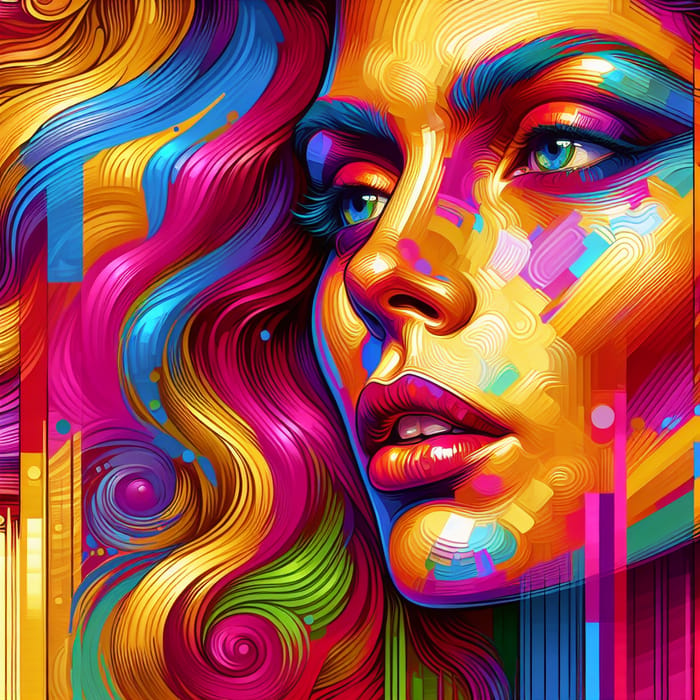Across the history of art, artists have continuously pushed the boundaries of traditional representation, exploring new ways to express emotions, ideas, and perspectives through their creations. Abstract art, a genre that departs from the realistic depiction of the world, has given rise to some of the most influential and groundbreaking movements in the art world. This comprehensive guide delves into the major abstract art movements, exploring their unique characteristics, pioneering artists, and the profound impact they have had on the evolution of artistic expression.
Fauvism (1905-1908)

Fauvism, which translates to “the wild beasts” from French, was one of the first major abstract art movements that emerged in the early 20th century. This radical departure from traditional painting techniques was characterized by the use of bold, vibrant colors and simplified forms, creating a sense of unbridled energy and raw emotion.
The Birth of Fauvism
Fauvism emerged in Paris in the early 1900s, primarily through the works of Henri Matisse, André Derain, and Maurice de Vlaminck. These artists were united in their desire to break free from the constraints of traditional representational painting, seeking to capture the essence of their subjects through bold strokes and intense colors.
Expressive Use of Color
One of the defining characteristics of Fauvism was the artists’ unrestrained use of color. Rather than adhering to the natural hues found in reality, the Fauves embraced pure, unmixed colors, often applied in thick, expressive brushstrokes. This vibrant palette was not merely decorative but served as a means of conveying emotion and capturing the artists’ subjective experiences.
Simplified Forms
In addition to their daring use of color, Fauvist artists simplified forms, reducing objects and figures to their most essential shapes and lines. This approach allowed them to focus on the expressive qualities of their compositions, prioritizing the communication of emotions over strict adherence to realistic representation.
Notable Fauvist Artists
- Henri Matisse: Considered the leader of the Fauvist movement, Matisse’s works, such as “Woman with a Hat” and “The Open Window, Collioure,” exemplify the bold use of color and simplified forms that defined the style.
- André Derain: Derain’s landscapes, like “Collioure” and “The Pool at Collioure,” showcase his mastery of vibrant colors and expressive brushwork.
- Maurice de Vlaminck: Known for his landscapes and still lifes, de Vlaminck’s works, such as “The Village” and “The River Seine at Chatou,” demonstrate the Fauvist approach to color and form.
Cubism (1907-1914)

Cubism, pioneered by Pablo Picasso and Georges Braque, was a revolutionary movement that challenged traditional notions of perspective and representation in art. This groundbreaking style deconstructed objects into their basic geometric forms, reassembling them in new and unexpected ways.
The Birth of Cubism
Cubism emerged in the early 20th century, with its roots traced back to the works of Paul Cézanne, who experimented with breaking down forms into their geometric components. Picasso and Braque took this concept further, creating a new visual language that defied traditional conventions of representation.
Fragmentation and Reconstruction
At the heart of Cubism was the idea of fragmentation and reconstruction. Objects were broken down into their basic geometric shapes, such as cubes, cylinders, and spheres, and then reassembled from multiple viewpoints simultaneously. This approach challenged the traditional notion of a single, fixed perspective, offering a more dynamic and multidimensional representation of reality.
Analytical and Synthetic Cubism
Cubism can be divided into two distinct phases: Analytical Cubism and Synthetic Cubism.
- Analytical Cubism (1909-1912) focused on the deconstruction of objects into their geometric components, creating fragmented and abstracted forms.
- Synthetic Cubism (1912-1914) introduced the incorporation of non-traditional materials, such as newspaper clippings, into the canvas, further blurring the boundaries between art and reality.
Notable Cubist Artists
- Pablo Picasso: Considered the pioneer of Cubism, Picasso’s groundbreaking works, such as “Les Demoiselles d’Avignon” and “Guernica,” revolutionized the way art was perceived and understood.
- Georges Braque: A close collaborator with Picasso, Braque’s contributions to Cubism are exemplified in works like “The Portuguese” and “Violin and Candlestick.”
- Juan Gris: Known for his sophisticated and complex Cubist compositions, Gris’ works, such as “The Sunblind” and “The Bottle of Banyuls,” showcase his mastery of the Cubist style.
Expressionism (1905-1935)

Expressionism, originating in Germany, was an artistic movement that sought to convey subjective emotions and inner experiences through abstract forms and colors. This style rejected the traditional pursuit of realistic representation, instead embracing a more personal and emotive approach to art.
The Birth of Expressionism
Expressionism emerged in the early 20th century, with its roots in the works of artists such as Edvard Munch and James Ensor. These artists paved the way for a new generation of painters who sought to express their innermost feelings and emotional states through their art.
Distorted Forms and Vivid Colors
Expressionist artists employed distorted forms and vivid, non-naturalistic colors to convey their emotional and psychological states. The use of exaggerated and stylized brushwork, as well as bold and contrasting colors, allowed them to create highly expressive and emotionally charged compositions.
Subjectivity and Emotional Expression
At the core of Expressionism was the idea of subjective expression. Artists sought to capture their personal experiences, emotions, and inner turmoil through their art. This approach allowed for a more direct and visceral communication of the artist’s state of mind, transcending the boundaries of traditional representation.
Notable Expressionist Artists
- Edvard Munch: Known for his iconic painting “The Scream,” Munch’s works, such as “Anxiety” and “The Sick Child,” exemplify the Expressionist style’s ability to convey intense emotional states.
- Wassily Kandinsky: Considered one of the pioneers of abstract art, Kandinsky’s works, like “Composition VII” and “Improvisation 28 (Second Version),” demonstrate his use of color and form to evoke emotional responses.
- Egon Schiele: Known for his raw and emotive portraits and self-portraits, Schiele’s works, such as “Self-Portrait with Raised Bare Shoulder” and “The Embracing Couple,” capture the essence of Expressionism.
Futurism (1909-1916)
Futurism, a avant-garde movement that originated in Italy, celebrated the dynamic energy and technological advancements of the modern age. This style rejected traditional artistic conventions, embracing speed, motion, and the machine age through bold, abstract compositions.
The Birth of Futurism
Futurism emerged in the early 20th century, spearheaded by the Italian poet Filippo Tommaso Marinetti and his Futurist Manifesto. This revolutionary document called for a rejection of the past and an embrace of modernity, speed, and progress.
Dynamism and Motion
One of the defining characteristics of Futurism was its emphasis on dynamism and motion. Futurist artists sought to capture the energy and movement of modern life through abstract forms and compositions. This was often achieved through the use of blurred lines, fragmented shapes, and a sense of motion and speed.
Celebration of Technology
Futurism celebrated the technological advancements of the modern age, embracing the machine as a symbol of progress and innovation. Futurist artists incorporated industrial elements, such as gears, wheels, and machinery, into their works, reflecting the rapidly evolving urban landscape and the spirit of modernity.
Notable Futurist Artists
- Umberto Boccioni: Considered the leading Futurist sculptor and painter, Boccioni’s works, such as “Unique Forms of Continuity in Space” and “The City Rises,” exemplify the movement’s dynamic and kinetic approach.
- Giacomo Balla: Known for his depictions of motion and speed, Balla’s works, like “Dynamism of a Dog on a Leash” and “Abstract Speed + Sound,” capture the essence of Futurism.
- Gino Severini: Severini’s paintings, such as “Dynamic Hieroglyph of the Bal Tabarin” and “Blue Dancer,” showcase his mastery of Futuristartistic principles and his ability to convey the energy and vitality of the modern age.
Surrealism (1924-1966)

Surrealism was a revolutionary artistic and literary movement that emerged in the aftermath of World War I. Led by the French writer André Breton, Surrealism sought to unlock the power of the unconscious mind and explore the realm of dreams, fantasies, and the irrational. This style rejected rationality and embraced the mysterious and the absurd, creating dreamlike and fantastical compositions that challenged conventional reality.
The Birth of Surrealism
Surrealism emerged in the 1920s as a response to the devastation and trauma of World War I. Influenced by Freudian psychoanalysis and the writings of poets such as Arthur Rimbaud and Charles Baudelaire, Surrealists sought to tap into the subconscious mind and unleash its creative potential.
Dreamlike Imagery and Symbolism
Surrealist artists employed dreamlike imagery, symbolism, and juxtapositions to create enigmatic and otherworldly compositions. By combining unexpected elements and exploring the depths of the unconscious, they sought to challenge the viewer’s perceptions and provoke new ways of thinking.
Automatism and Chance
Central to Surrealism was the practice of automatism, a technique that involved tapping into the subconscious mind to create art without conscious control or censorship. Surrealist artists also embraced the element of chance, allowing random and spontaneous processes to guide their creative output.
Notable Surrealist Artists
- Salvador Dalí: Known for his eccentric personality and flamboyant style, Dalí’s works, such as “The Persistence of Memory” and “The Elephants,” showcase his mastery of Surrealist techniques and his ability to create visually striking and thought-provoking compositions.
- René Magritte: Famous for his witty and enigmatic paintings, Magritte’s works, like “The Treachery of Images” and “The Son of Man,” challenge the viewer’s perception of reality and the nature of representation.
- Leonora Carrington: A key figure in the Surrealist movement, Carrington’s works, such as “The Inn of the Dawn Horse” and “Self-Portrait,” explore themes of transformation, mysticism, and the subconscious.
Abstract Expressionism (1940s-1960s)
Abstract Expressionism was a major art movement that emerged in the United States in the 1940s and 1950s. Characterized by its emphasis on spontaneous, gestural mark-making and the exploration of the subconscious, Abstract Expressionism represented a radical departure from traditional modes of representation. This style emphasized the act of painting itself, focusing on the artist’s emotions, instincts, and inner experiences.

The Birth of Abstract Expressionism
Abstract Expressionism emerged in post-World War II America as a response to the tumultuous political and social climate of the time. Influenced by European avant-garde movements such as Surrealism and Cubism, American artists sought to break free from academic traditions and explore new forms of artistic expression.
Gestural Abstraction and Color Field Painting
Abstract Expressionist artists employed two main approaches: gestural abstraction and color field painting.
- Gestural Abstraction: Artists such as Jackson Pollock and Willem de Kooning used dynamic, expressive brushstrokes and drips of paint to create energetic and emotionally charged compositions.
- Color Field Painting: Artists like Mark Rothko and Clyfford Still focused on large expanses of color to evoke profound emotional responses and contemplation.
Emphasis on the Artist’s Experience
Abstract Expressionism emphasized the artist’s experience and inner world, prioritizing personal expression and subjective interpretation over objective representation. Artists sought to convey their emotions, thoughts, and subconscious impulses through their art, inviting viewers to engage with the work on a visceral and emotional level.
Notable Abstract Expressionist Artists
- Jackson Pollock: Known for his innovative drip painting technique, Pollock’s works, such as “Number 1A, 1948” and “Autumn Rhythm (Number 30),” revolutionized the art world and redefined the boundaries of painting.
- Willem de Kooning: A prominent figure in the New York School, de Kooning’s abstracted figurative works, like “Woman I” and “Excavation,” reflect his dynamic and expressive approach to painting.
- Helen Frankenthaler: Known for her pioneering soak-stain technique, Frankenthaler’s works, such as “Mountains and Sea” and “Jacob’s Ladder,” explore the relationship between color, form, and space.
Conclusion
In conclusion, the 20th century witnessed a remarkable diversity of artistic movements that challenged traditional notions of perspective, representation, and artistic expression. From the revolutionary innovations of Cubism and Futurism to the emotive intensity of Expressionism and Surrealism, each movement offered a unique vision of the world and expanded the possibilities of artistic creation.
As artists grappled with the changing realities of the modern age, they sought new ways to capture the complexities of human experience, emotion, and consciousness. Whether through fragmented geometric forms, dreamlike imagery, gestural abstraction, or pop culture references, these movements pushed the boundaries of art and paved the way for future generations of artists to explore, experiment, and innovate.
By embracing innovation, experimentation, and the unknown, 20th-century artists transformed the landscape of art and opened up new possibilities for creative expression. Their legacy continues to inspire and influence contemporary artists, reminding us of the enduring power of art to challenge, provoke, and illuminate the world around us.
wfriv.xyz